I’m not always rational when it comes to buying cameras, quite often I buy them just for the experience of owning and trying them. But when it comes to the Leicas, I’ve tried to be a little more rational, and when it came to the Leica M3, I’ve tried even harder!
I try to buy a Leica as tool with a function, even though I often end up seeing them as more than that once I own them. Taking the two M-mount Leicas I otherwise own as examples: The Leica M7 – with its basic level of automation and superb light meter – was bought as, and remains, the ideal Leica for me. The step sideways to the Leica M4-P gave me something a little less “bling”, something fully mechanical, something I felt I could trust implicitly. So why a Leica M3? Why buy a third Leica M-mount camera?
Rationalising the purchase of a Leica M3
I have a Leica iiia, so it would be unfair on it to claim I wished to try a “vintage” Leica. But I’d by lying if I said I wasn’t motivated to try a “vintage” M-mount Leica. There is a lot said online about the joys of early brass-component Leicas. The change in methods of building and construction materials that started with the M4-2 seems – at least in many people’s eye – to have been the end of an era.
The cameras that came before were of a quality of build and construction that – with the exception of a few special editions – has only been matched by perhaps the latest MPs and M-As (and no doubt a few special editions). If I’m honest – though possibly through naivety as much as anything else – I remain a little sceptical about just how much better these brass-component cameras can be. I’m not saying they aren’t better built higher quality machines, just that perhaps the cavernous gap in quality that is sometimes implied might be an exaggeration. After all, it is Leicas we are comparing to Leicas here.
That being said, setting my attempts at being pragmatic to one side for a minute, it remains difficult not to be highly intrigued by the likes of a Leica M3. Just consider some of the comments found around the internet about it. The shear volume of content that gushes over this camera as if its crafted by gods with oil of snake and horn of unicorn is phenomenal. Ken Rockwell’s review, bless him, is just sickly with praise!
And yet so many writers follow the same path of over the top, uncontrollable admiration. I must admit, my gut reaction to this type of commentary about a camera is just to roll my eyes. “Go and spend a few moments alone, or perhaps take a cold shower, come back and then we might be able to have a more realistic conversation about it” is the comment I never have the guts (nor actual real inclination) to leave.
Interestingly though, conversely, when reading my way through many other sentiments written about the Leica M3, I also found a lot of content that was actually almost overtly dry and emotionless. It’s almost as if other writers are motivated to provide an antithesis of the likes of Rockwell’s meandering, borderline-lustful prose. In fact, it seems to me that – with only a few exceptions – most who have written about the Leica M3 seem incapable of commenting on both its positive and negative attributes, both subjectively and objectively. The result of this for me was actually that despite the volume of content, I found very little that I would consider to be particularly useful to me in my search for both the facts and how those facts might impact on my experience.
I fear I may have drifted off on a tangent there a little bit…
Back to rationalising the Leica M3
So it’s old, but according to a lot of people, bloody lovely – That’s not quite enough for a rational purchase is it? What other reasons are there to buy such a camera? Well, for me at least, if I was going to buy an early M-mount Leica, it needed to bring something more to the table than the Leicas I already own.
For me, for my wants and requirements, as someone who shoots more with a 50mm than with any other focal length on a Leica, that one feature the Leica M3 has that no other M-mount camera can give me is the combination of long rangefinder base and high magnification 0.91x viewfinder. A combination that supposedly makes shooting a 50mm a real joy. That was the biggest box it ticked! So combined with the intrigue of the early Leica brass component manufacturing, a decision to purchase a Leica M3 was made. Now I just had to work out which Leica M3 to buy; it would be far to simple for them to all be the bloody same wouldn’t it?!
Choosing the right Leica M3 for me
I did some serious reading to determine the best Leica M3 for me, though I should add the resources noted at the bottom provided me with the most useful pieces of information, or at very least we’re the posts I most enjoyed. Before I explain the steps to the conclusion I came to, I’m actually going to tell you the conclusion.
You might think this an odd thing to do, but it’s the one piece of info that once I came to understand it, I felt it made my search for an Leica M3 a lot easier. That piece of info it is as follows: a Leica M3 with a serial number of 1,000,000+ makes a sensible and easy choice to make!
I’m not saying it’s the only choice or even the right choice, but I would definitely define it as at least a sensible one. As follows is the rationale behind that statement; the step by step I went through before realising that I needn’t worry myself with any of it, just by looking for a 1,000,000+ serial number camera. If you are reading this in anticipation of buying a Leica M3, you might like to consider this as less a buyers guide, and more a buyers anecdote…
A Leica M3 buyers anecdote
Single stroke vs double stroke?
Entire forum threads surround just this subject. I’ve read commentary about the double stroke mechanism being smoother, and indeed that neither mechanism is smoother, I’ve read about how the original Leica M3 double stroke was designed to help keep friction lower on components and even that it was to help keep static lower in the camera(?!).
I’ve also read that the double stroke mechanism was superseded after engineers repairing cameras – once having observed the parts after they’d had considerable use – realised there was no need for it. I could go on, there seems a lot to say about what seems to be something fairly simple. I don’t know what’s true and what’s not, and I honestly don’t really care either.
Here are my thoughts: I can wind a single stroke once or twice (as I do quite frequently) or 5 little times if I want. A double stroke has to be wound a minimum of twice. Sometimes I like to wind once… That’s the end of that then.
This might seem flippant, but after reading through a tomes worth of info and not finding any conclusive answers, what more do I have to go on than my own simple personal preference? So that was one tick against the idea of a late model.
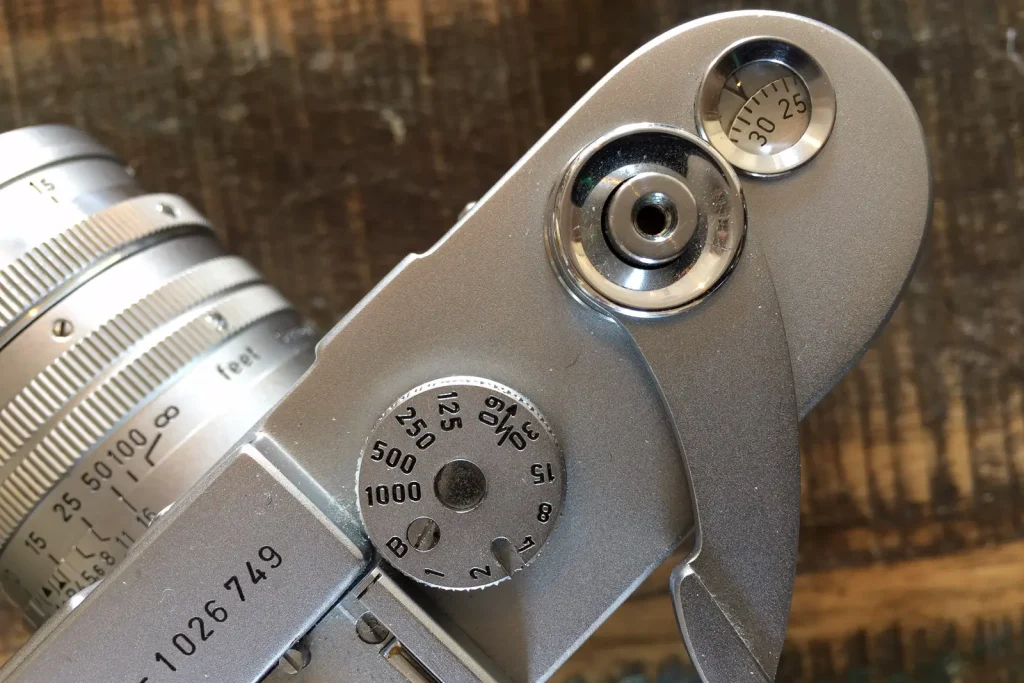
Glass pressure plate?
Early Leica M3 models had glass pressure plates but my preference for a single stroke outweighed even thinking about buying such an early model. I’m not even sure of the potential advantages to glass over metal, some seem to say it’s flatter, but since steel seems to be used in practically every other camera I can think of, I didn’t see this as a concern. And so that was two ticks for a late model
Shutter Speeds?
Later Leica M3 models have more modern shutter speed selections of B – 1- 2 – 4 – 8 – 15 – 30 – 60 – 125 – 250 – 500 – 1000. Early Leica M3 models had differed in the mid-speeds; B – 1 – 2 – 5 – 10 – 25 – 50 – 100 – 250 – 500 – 1000. In my view, the only consideration here is for the speeds your chosen light meter has. I have a Voigtlander VC Meter II which uses the more modern speeds. So once again an early model was ruled out.
I actually ended up buying a Leica MR-4 meter with my Leica M3, which being as it is a meter designed for the M4, also has the later speeds. In fact – though I probably shouldn’t be quoted on this – I suspect the only meters designed for a Leica M3 that would fit the older speeds would be one of the very early selenium based meters, and I wouldn’t want to buy one of those these days due to their age. Three ticks for a late model Leica M3!
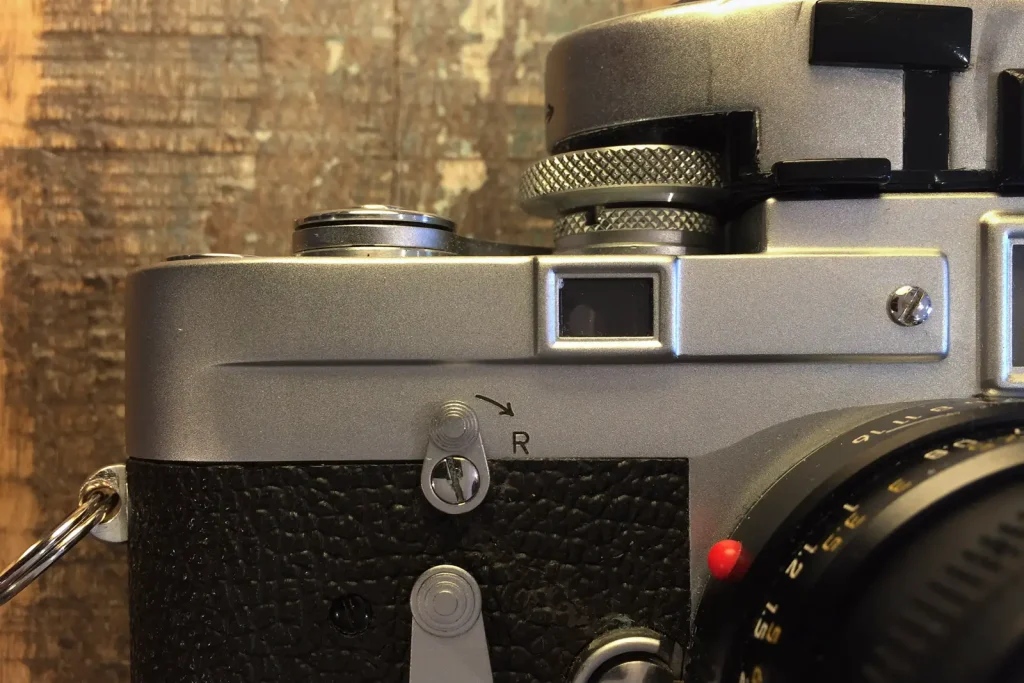
Rangefinder Patch
Later Leica M3 models have notches on the rangefinder patch that indicate depth of field. This sounded brilliant, though I must admit when reading about it, I struggled to imagine how it might work. However it worked though, it was a feature I felt I wanted to experience; it sounds interesting! Four ticks for a late model
Other minor considerations
Early Leica M3 models also had different strap lugs. Known as “Buddha Ears” due to their shape, they are seemingly mostly an aesthetic thing, though of course there are those who favour them for their supposed extra strength and quality. Very slightly different shaped strap lugs is certainly no reason to buy an early model in my world. The later models also had a manual frame line lever. I must admit, it wouldn’t bother me if it was lacking, though I wouldn’t to go out of my way not to have it. Five and six ticks for a late model Leica M3!
Ability to modify the rangefinder to close focus to 0.7m
Regular readers will know that actually this wasn’t a consideration I made, or even knew anything about prior to purchasing my Leica M3. I am just including it here for the benefit of a more complete understanding of my point. Had I known about it, it probably would have further helped with my decision making process.
Early Leica lenses didn’t focus closer than 1m, at least without some sort of adapter or extra accessory. Because of this, the Leica M3 wasn’t actually designed to focus closer than 1m. Later models are easier to modify for closer focusing down to 0.7m, though I should add the modification isn’t without its issues, and still isn’t always possible. I’ll come back to this in a moment. So in the end, my rationalisations give eight ticks next to the idea of purchasing a late model Leica M3.
Which lead me to the 1,000,000+ serial number Leica M3
You might have noticed that I didn’t mention serial numbers. Almost every guide to buying a Leica M3 has listed the points at which the above changes where made. Without wanting to sound a bit moronic, I found all this info a little overwhelming. What I was looking for was actually something like the simple and concise piece of information that I mentioned before: Buying a Leica M3 with a serial number over 1,000,000 makes for a sensible and easy to make choice.
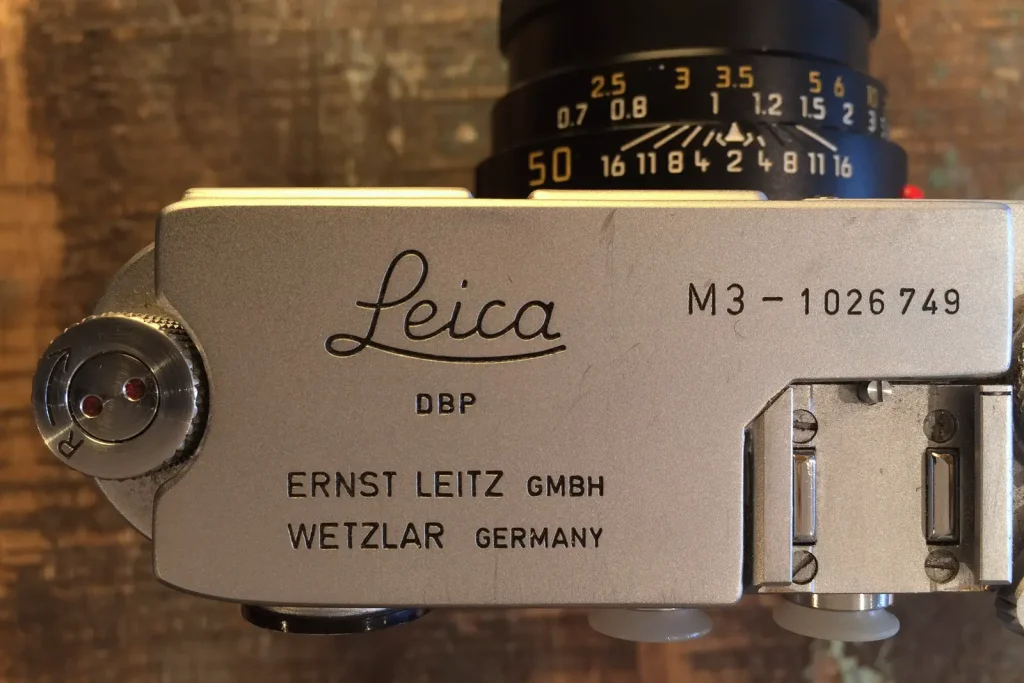
1,000,000+ serial number Leica M3s have all of the “improvements” Leica made to the camera, but not only this, in very simple terms they are newer cameras. A lot of years have passed since any Leica M3 was manufactured, but one thing I read I few times that seemed to really make sense to me was that later Leica M3s were made by more experienced hands.
So whilst the difference in age is fairly little between a low and high serial number camera, this difference is possibly magnified by the experience of the technicians that would have built the cameras. Of course, seeing as it’s the Leica M3 we are talking about, just as many people see this as nonsense as people see this as sense… But if I was going to grasp at any bit of hearsay, this seemed to be the bit that gave the most weight to my personal rationalisations.
Ultimately, I buy my cameras to use, and because of this, when I buy a camera, I want to buy the most sensible iteration of that camera in terms of usability. I’m sure there are many people out there who would buy double stroke Leica M3 for their collection, or maybe because they are in fact smoother, or are seemingly slightly cheaper (apart from the really early ones), but for me, in the end, a 1,000,000+ s/n just seemed the logical thing to do… So that’s what I set out to find.
Buying my Leica M3
Every inch of the so-far-relied-upon rational part of my brain was pushing me away from ebay when I was looking for a Leica M3. “Find one with a warranty from a dealer” my sensible brain told me “Get one from JCH, he’s been bang on in the past”… So what did I do?
I got a little bit tipsy on Christmas Day, and made an offer on a listing on eBay. Now admittedly, the response I got wasn’t until the next day, but by then I’d looked at the listing in question somewhere in the region of 40,000 times and had become a little bit fixated on the idea of it… And after all, it was Christmas – time to treat myself.
Needless to say, a deal was hashed out. Silly Hamish? Lucky Hamish? Well, let’s not forget that not everyone on eBay is out to get you. In fact most people on there are decent enough. The problem is, decent doesn’t necessarily mean informed or capable of assessing a cameras working condition, which in defence of myself, is the reason I made the mistake I have outlined in this previous post and approached the seller about the fact that it didn’t focus closer than 1 meter.
I was worried I’d bought a duff, so when I got it the first thing I did was try to find a problem with it. Of course what I should have done is search google, just like the seller did just before he sent me a link to a forum post where someone else was asking about the close focus limitation. I’d done my research on this camera, but somehow had missed this one salient point about it. So that when I put my v4 summicron on to it – a lens that focuses down to 0.7m – it seemed broken. It wasn’t.
The Leica M3 in my hand
So, I got my 1,000,000+ s/n Leica M3, I’ve spent countless hours reading about them, researching which one to buy, expectations being built up and up by those out there in internet-land adding more and more virtual stone blocks to the virtual pedestal on which this camera stands, and now I finally have it in my hand, is it everything and more than I expected?
Well, there is a funny effect of taking ownership of something and then spending the first half day of your relationship with it thinking it’s broken. I spent these first few hours looking at it with suspicion, inspecting it with a much more objective eye. I noticed the fact that the vertical rangefinder alignment was slightly out, that the vulcanite is chipped in places and has had obvious repairs in others.
I also noticed that there is some slight scuffing to the top plate and that whilst it felt smooth in operation, it also felt ever so slightly dry. Ordinarily these things wouldn’t bother me, but combined with a nagging feeling I’d bought a duff camera, I was feeling a little negative about my new-to-me Leica M3.
Looking back, I realise my negativity was mostly ill founded. Once I’d realised the error of my concerns, I also realised just how simple it is to adjust the vertical rangefinder alignment, just how little it matters that there is one or two tiny chips to the vulcanite and a few very small scuffs to the top plate. And funnily enough, the shutter cock/film advance mechanism started to feel a little smoother too… Though perhaps not as perfectly smooth as I might have hoped from all that snake oil and unicorn horn (and perfectly matched brass components). So a CLA in order I think. But before that, I wasn’t going to be sending it anywhere until I’d run at least a couple of rolls of film through it…
My Leica M3 review
… And I’m gonna start with the things that in doing that I found I didn’t like as much about Leica M3. Blasphemy!
Starting with the fact that it only focuses down to 1m, since it’s that which caused me such problems when I first got the camera. Though I should probably provide a bit of perspective on this subject first, the Leica M3 is actually capable of focusing closer than even 0.7m.
With a Summicron DR (Dual Range) and its accessory “goggles” the Leica M3 will focus down to 50cm(ish), and also perhaps closer than 1m with other adapted Leica lenses and viewfinders. But outside of the use of such things, the Leica M3 is not designed to focus closer than 1m and as such doesn’t with more modern 50mm lenses with 0.7m minimum focusing distances.
Of course, I modified mine, like it seems many others have, but this isn’t always possible, and even when it is possible it seems that some won’t focus all the way down to 0.7m. Mine does, but I was lucky. In short, if buying a Leica M3, it’s probably best to assume it’s going to only focus down to 1m. Buy a late model and you might be luckier, but take the stance of assuming that 1m is the minimum and you might be pleasantly surprised. Rather than unpleasantly, as – through ignorance – I was.
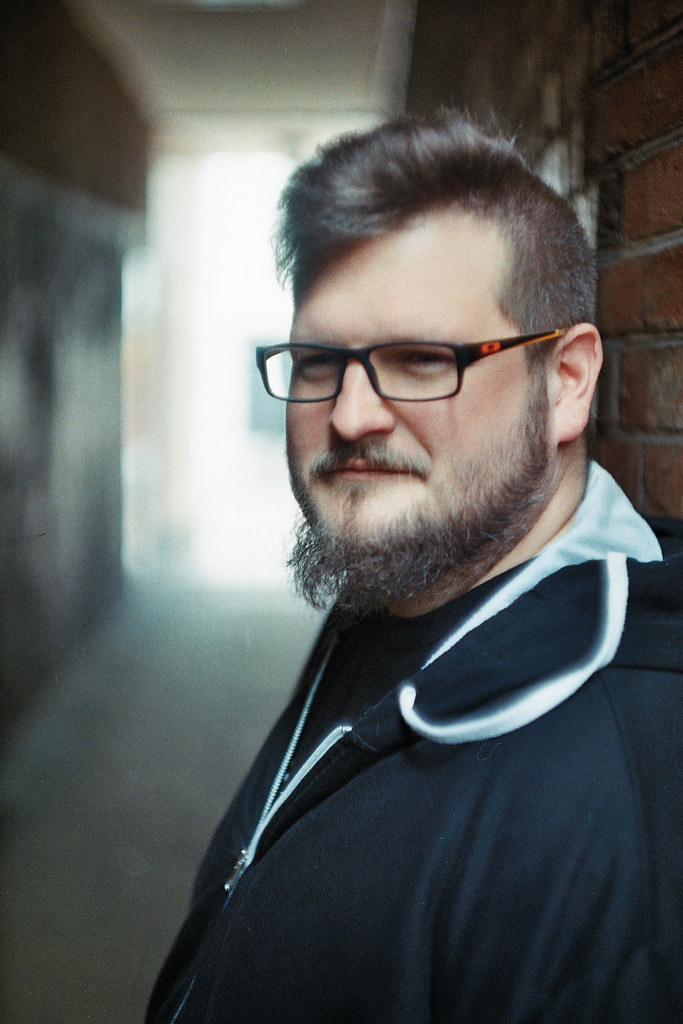
Whilst on the subject of the viewfinder I’m also going to mention that I’m not that keen on the big rounded edged 50mm frame lines found in the Leica M3. Though I should add, I do feel a little picky complaining about such a thing, especially when there are so many positive attributes to mention about the viewfinder.
They are just a little more in your face than the 90 and 135 lines which are much more like the frame lines I’m used to in my more modern viewfinders. They are also not quite as bright. The M2 and later had a differently designed Fresnel frame line illumination window that made the lines brighter, but of course the M2 and later also lacked the 0.91x finder.
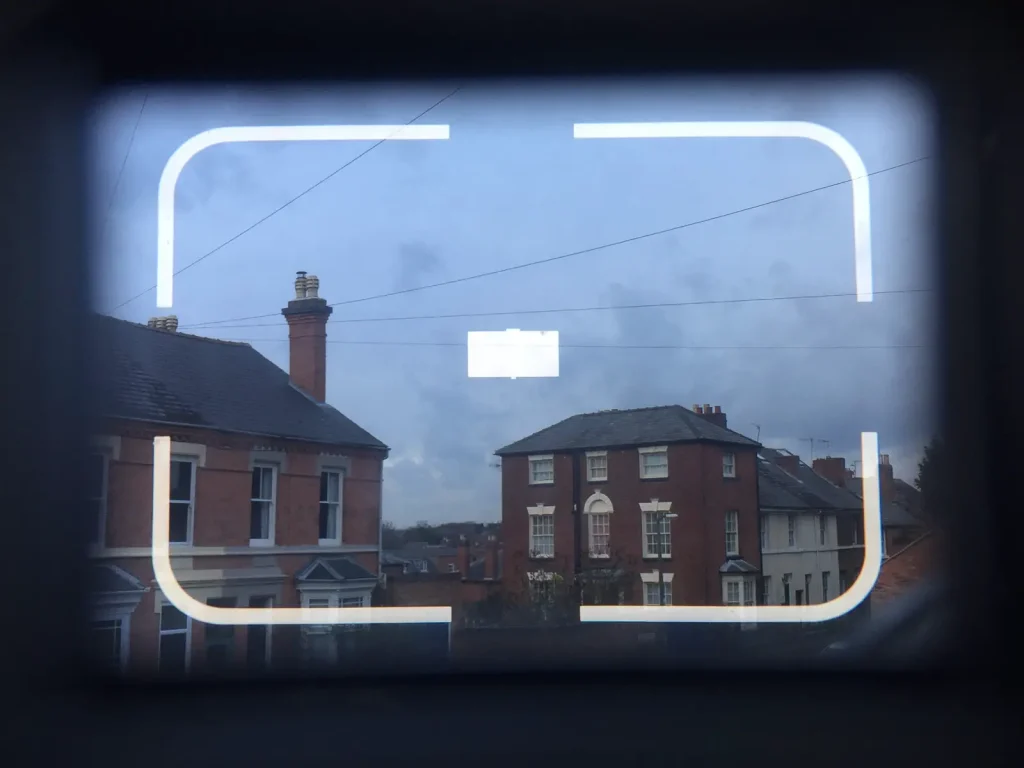
Using a flash
The Leica M3 sports some pretty funky looking proprietary flash connection sockets. Not really an issue for me, as I’m not a big user of flash guns, but if you are you will have to get an adapter. If I were a user of flash, and I did get an adapter I’m still not sure I’d be happy. Since I am largely one of those clumsy looking left eye shooting people, the position of the connectors is such that I would expect it to interfere with my face; possibly my right eye. My right eye is already rubbish enough without me poking bits of PC connector into it thank you very much! But, as I say, I don’t use flash much, I’ll just definitely not be using one with the Leica M3
Loading the Leica M3 is a faff
This seems to be one of those subjects that causes a divide in opinion. To my mind, the loading of a Leica M3 compared to the M4 and later is a faff. You have to pull the take up spool out of the camera, slot the leader into it, pull the film out to just the right length then push the film canister and film into the camera at the same time. The M4 and beyond don’t have a take up spool, they have a three pronged devise that the leader just gets slotted in to. For my tastes the later mechanism makes both loading and unloading the camera a much less troublesome experience. The Leica M3 can apparently be modified to have a later quick loading mechanism, but this comes at the cost of the automatically resetting frame counter.
Rewinding the film
First film shot and it was time to rewind… … … It takes ages. I felt like I was twisting the little rewind knob for so long the first time that I became convinced I was doing something wrong. Is this really a problem? No, I suppose not, but had it got a folding rewind lever like my later M’s I’d be happier. The experience made it feel like an old camera.
It is an old camera
Ageism! I hear you cry. I don’t mind old cameras, especially when they feel as rock solid as a Leica M3. But like it or not, if you want a perfectly functioning one, you are likely to want to get it CLA’d (Cleaned, Lubricated and Adjusted). I’d hoped to avoid this by buying a 1,000,000+ later model.
In hindsight, was not as sensible a thought process I’d have liked. Made in 1961, My Leica M3 has 54 years of unknown levels of ware. And of course no service history, at least that I’m aware of. To pick on it for being old is a little unfair, I do appreciate that… I knew I was buying an old camera when I bought it, I should have thought a little harder about that fact and perhaps not expected as much. Though I should add, for a 51 year old camera, that may very well have not been serviced for a good few of those years it is very very well functioning. I just think it needs looking at to be as it should or could.
So, negative points aside, what do I like?
Well, I’m going to start with something that might seem insignificant, but actually represents something a lot deeper. And that something is the little dial on the back for reminding yourself of the film contained within the camera. If you have read my Leica M7 review you will know that the plastic atrocity for selecting ISO and exposure compensation that sits on the back of the camera is something that I don’t exactly rate very highly. I should add, that I let the M7 off for it, because in use it doesn’t affect me at all. But let’s face it, that bit of plastic is shit! The M4-P didn’t even bother with a dial, it just had a wipeable disk for writing the ISO of the film on.
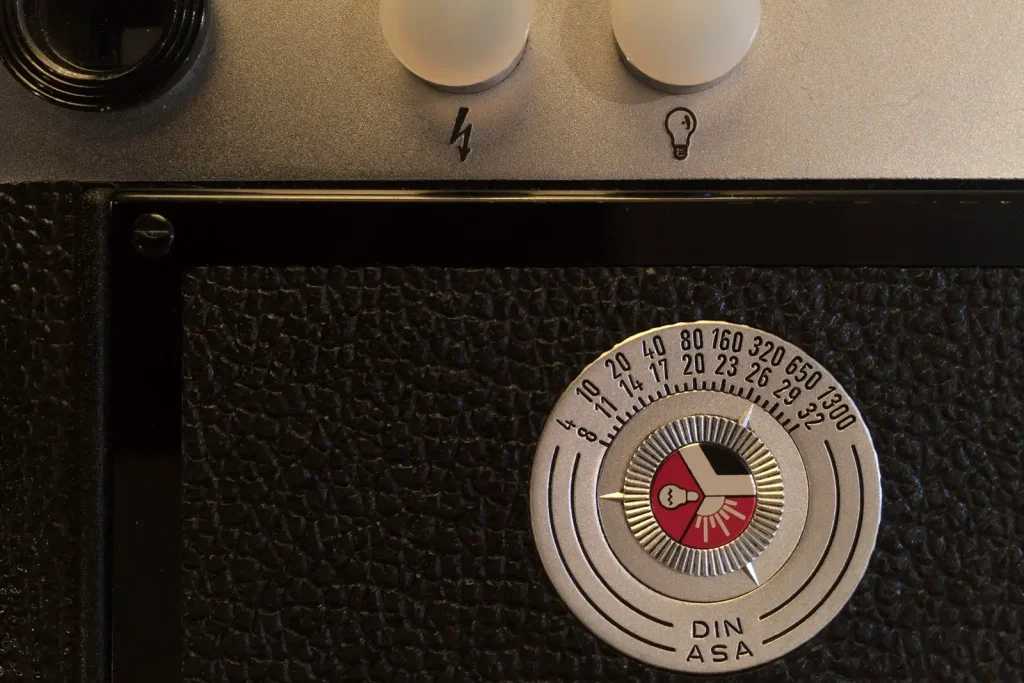
The Leica M3 on the other hand has a machined, spring loaded little dial. A beautiful thing it is. So what, this is a small feature of the camera right? Well, for me the dial on the back of the Leica M3 represents attention to detail, it represents evidence of absolutely no cost cutting exercise in the build of the camera. It represents the pure luxury and refined quality of the camera. And that is something that is hard not to feel and see within every square centimetre of the Leica M3.
It feels and looks designed and built to perfection. There are other Leicas that are built like this, but if the bits of history I have read are correct, it seems the later M2 was built to be a less expensive camera, the M4 utilises bits of black plastic, which although few, could be said to detract slightly.
The M4-2 though to M6 were made out of cheaper metals internally and the practices with which they were built changed for cost saving purposes. The M6 had zinc top and bottom plates – another cost saving exercise. The M7 had brass top and bottom plates again, but it also has the aforementioned crappy plastic dial … And only works with batteries!! And in fact even the MP has a plastic dial in the back and plastic battery cover.
So aside from special editions and shorter run/less major model iterations, the latest M-A is the only other Leica camera to not be let down by either the inclusion of black bits of plastic or evidence of cost saving. The Leica M3 was also the first ‘M’ Leica, it was the camera that started it all, the camera that got the concept so damned close to perfect it has hardly changed since.
The Leica M-A is testament to this presence of near perfection. After 60 years, Leica are still making cameras that only differ very slightly from the Leica M3. I’ve banged on about what I mean about perfect design in my meandering post about Barnack and the Leica iiia, so I won’t reiterate it all again here.
What I will say is that the Leica M3 does feel nigh on perfect. This might seem like an odd thing to say, since I have already identified flaws (and am yet to mention more), but for me, this idea of perfect design is not about subjective flaws. It is about the presence only the required, the lack of the superfluous and an elegance in the implementation of features and function.
Yes it might be fiddly to load, but there is an elegance in the solution that is hard to deny. It only focuses down to 1m, but for those who shoot Leica – or any rangefinder for that matter – this imposed limitation is accepted to the point of it being a non-issue. As such focusing closer is simply not a requirement (focusing down to 0.7m is better, but for the purpose of my point, let’s brush over that).
There are also little – if any – bells and whistles. It is a camera, a box with a timed shutter, and little more, it just to happens to accomplish its simple functions beautifully. Interestingly, this M-A review picks up on the concept of perfect design too. It is just something some people feel in Leicas, and is very much part of their pleasure.
Of course I have here hit, and somewhat perhaps vocalised, some of the near hysteria about the Leica M3 – and that is despite initially mocking those who do. The reality is, as much as I find people’s amorous commentary fairly amusing, really, I can’t argue with it. I’ve tried a bit, but ultimately, I must confess, for the reasons I’ve outlined above, I am too a little enamoured with the Leica M3, it is very clearly a special thing.
And so to its technical advantage – The viewfinder and rangefinder
The subject of the Leica M3 and its viewfinder and rangefinder almost goes almost without saying, but let’s face it, I probably wouldn’t have attempted to write a post about the Leica M3 if I believed in not saying things that could go without saying…
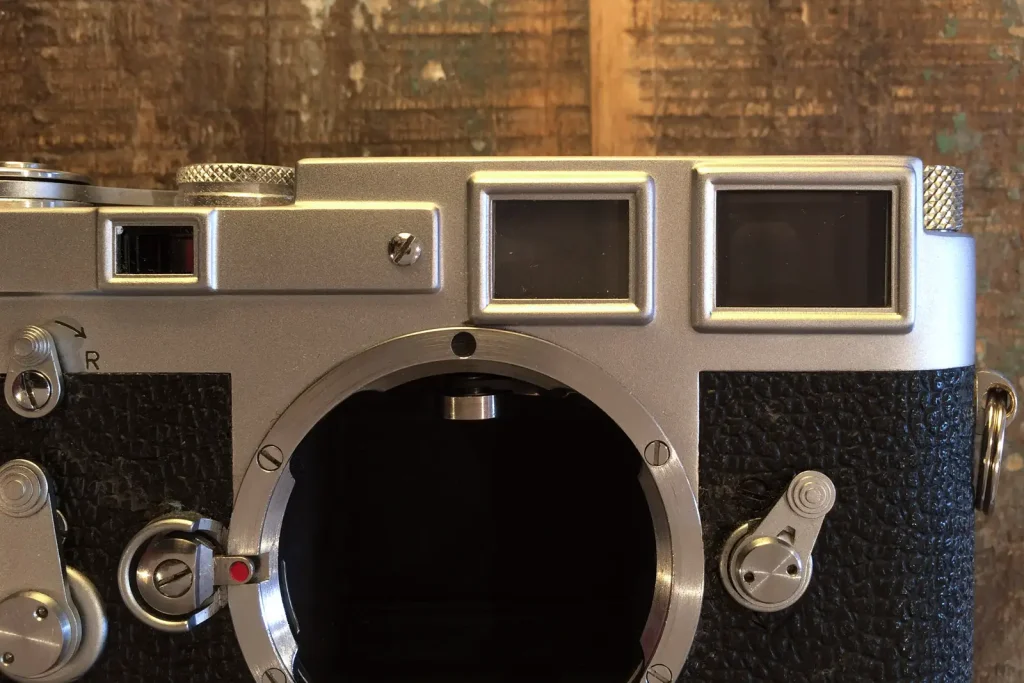
The viewfinder – but for the very slightly more dim than my M7 and slightly chubby/rounded 50mm frame lines – is a beautiful thing. It’s hard to get across just how much of an advantage the 0.91x magnification feels when framing a shot with one of my seemingly ever growing selection of 50mm Leica mount lenses.
I put the Leica M7 to my eye the other day for the first time since using the Leica M3 exclusively for a while and found myself shocked at how far away and small everything looked. And that’s both in terms of the subject in front of the camera and the frame lines and rangefinder patch inside the camera.
The rangefinder patch in the Leica M3 is quite simply huge, it has solid edges it is bright, it’s effective base length 62.33mm and did I mention it’s huge. (if you don’t know what I mean by effective base length, see my post here) Correct focus just pops into sight when found. Even one of my non-rangefinder shooting friends commented on how impressive it was… And he has an active distaste for rangefinders
The Leica for my personal requirements
I felt the following needed to be separated from the previous negative points by merit of them actually not being issues with the Leica M3 itself and more issues with the chap or chapette holding it… In this case, me. And actually these “issues” are merely the minor factors that have stopped it from being elevated to the position of my perfect Leica. The perfect Leica for my needs is (or was at the time I originally wrote this article) the Leica M7, a camera that for my shooting requirements has too many advantages to be supplanted by the Leica M3 for day to day use.
The two biggest factors that give the M7 a leg up over the Leica M3 are the light meter and auto exposure. “Blasphemy!” I hear the purist shout, again. Though this is not me saying the M7 is a better camera. It isn’t, I don’t think the M7 is necessarily even a better camera than my Leica M4-P, it just comes down to what suits the individual, and what suits me more often, is having a excellent built in light meter and auto exposure.
I think for long term use I would also choose a lower magnification finder too. I love the 0.91x finder in the Leica M3, it’s a wonderful thing to use, but ultimately, it is a limiting factor if you, like me, already have a range of lenses wider than 50mm. Though to that point I’d like to add that the Leica M3 has certainly impressed on me what I now see as a necessity to buy some sort of 1.25x magnifier for the viewfinder of the M7, a devise that would increase the finder to 0.9x; very close to that of the M3. Time will tell how well that works out, but it strikes me that the ability to have a near M3 finder on and M7 at my will might actually turn out to be quite a big deal for me.
So to conclude my thoughts on the Leica M3
If there was one thing I wanted to achieve in my search for, my purchase, my early experiences and my writing about the Leica M3, it was to remain rational. I failed when it came to the purchasing part (damn you ebay), and I nearly got all emotional when comparing the Leica M3 to the rest of the Leica range, but I think overall the rest of the process so far has been a reasonably rational one(…?).
The objective of this attempt to stay rational was to not get too washed away with the excitement that seems to sometimes surround this camera. An excitement that seems to have remained with people since the cameras inception, and has literally passed down through the generations of new photographers since. Photographers still crave this camera, still rave about this camera, and in some, if not many cases still hail it has one of the best cameras ever made.
I suppose the question is, if I have remained as rational as I like to think I have, how do I feel about it? Well, I did crave one, you’ve just read me rave about it. And taking into account that in the 60 years that followed only very minor adjustments were made to its design. A design that is loved and used by significant swathes of people, a design that has been copied but rarely improved upon and a design that has been all but returned to in the M-A just last year… It’s hard not to hail it as one of the greatest cameras ever made! In fact, it is almost beyond speculation, there are 60 years of evidence that backs up this claim!
It not being the perfect Leica for me as an individual doesn’t detract from that at all either. In fact, If anything, it goes to emphasise the point. As, for my personal tastes, I prefer one of the Leica M3’s many children, the Leica M7. The M7 is a camera so heavily styled on the Leica M3, the layman would barely tell them apart. Yet for my tastes and needs the few side steps the in design and function the M7 has when compared to the Leica M3 are ideal for me.
But isn’t that the beauty of what Leica have achieved over the last 60 years. Rather than follow the pack with endless steps toward over complication and over automation, they have just produced a range of slight deviations upon an initial nigh on perfect first concept. It’s almost as if they know just how right they got it when they put pen to paper first time round and designed the Leica M3.
Cheers for reading
Hamish
Since writing this post, I bought a Leica M3 DS – so if you are looking for more info about the M3, you can read more here in my post “The Leica M3 DS – My final thoughts on the Double Stroke vs. Single Stroke”
You can also find more articles on 35mmc about the Leica M3 here
And what I eventually did to make my Leica M3 more me here
More photos I have so far taken with the M3 can be found on my flickr
More links and interesting reading:
Info on the M3 courtesy of mir.com
Leica M3 – the classic rangefinder – photoethnography.com
Share this post:
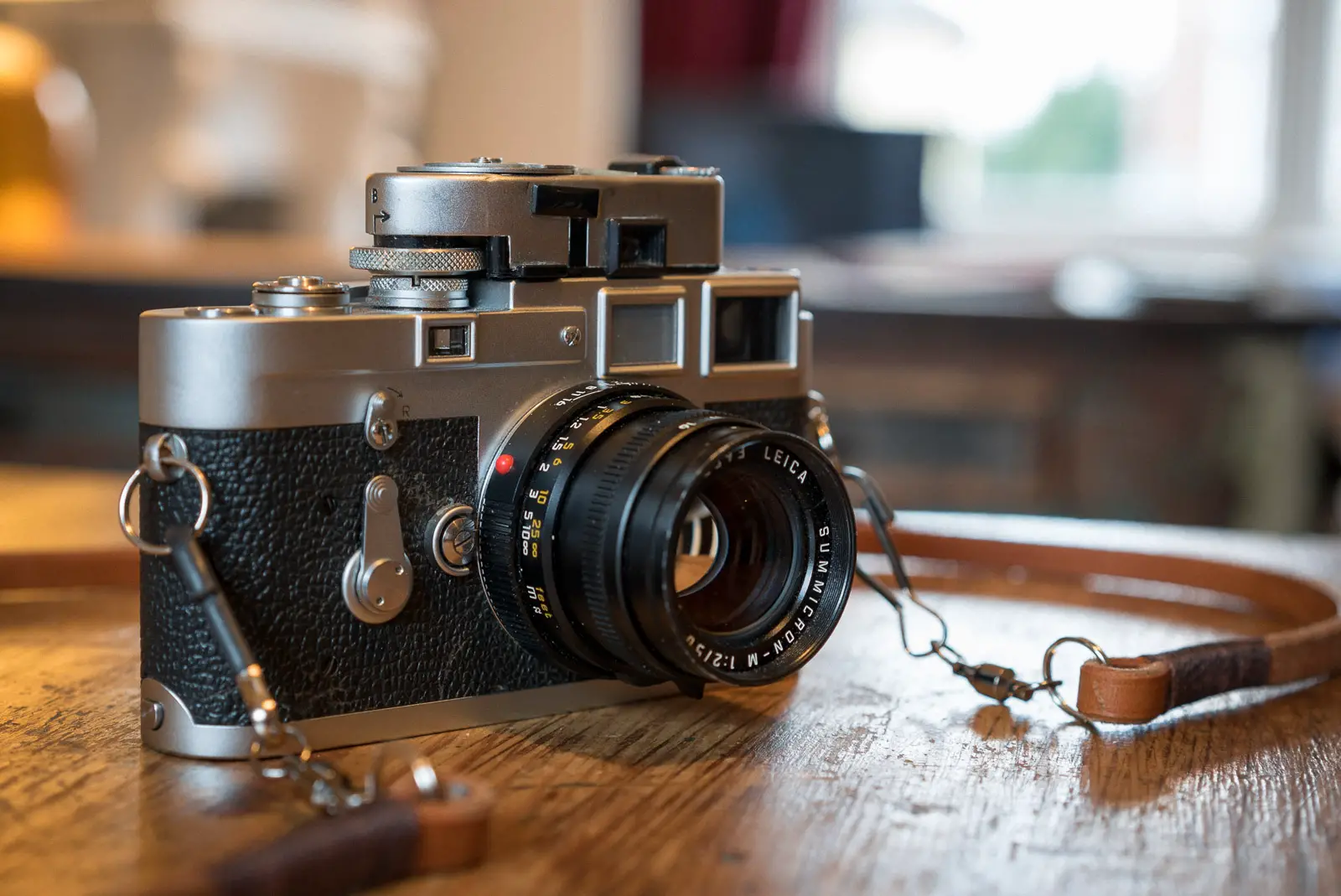








Comments
John on Leica M3 – a review, and some thoughts about finding the right version for me
Comment posted: 03/02/2015
Comment posted: 03/02/2015
Rob on Leica M3 – a review, and some thoughts about finding the right version for me
Comment posted: 03/02/2015
Comment posted: 03/02/2015
Chris Hunt on Leica M3 – a review, and some thoughts about finding the right version for me
Comment posted: 03/02/2015
I've tried all manner of 1.25x magnifiers on my M7, from the Leica branded one to cheaper models, and they all seem the same. They are also pretty disappointing. It's like looking through a porthole. A magnified porthole, but a porthole all the same. Some like them, but I never got on with the 1.25x or 1.4x.
Chris H
Comment posted: 03/02/2015
The Leica M3 | 35mmc on Leica M3 – a review, and some thoughts about finding the right version for me
Comment posted: 04/02/2015
antony northcutt on Leica M3 – a review, and some thoughts about finding the right version for me
Comment posted: 13/02/2015
Comment posted: 13/02/2015
r_kt on Leica M3 – a review, and some thoughts about finding the right version for me
Comment posted: 26/02/2015
Comment posted: 26/02/2015
Jeremy North on Leica M3 – a review, and some thoughts about finding the right version for me
Comment posted: 04/05/2015
Desert Island Disks style, if you could save only one camera from the waves, which would it be? The M7?
Comment posted: 04/05/2015
Paul Wong on Leica M3 – a review, and some thoughts about finding the right version for me
Comment posted: 17/07/2015
Comment posted: 17/07/2015
A Guide to Rangefinder Effective Base Length (EBL) - 35mmc on Leica M3 – a review, and some thoughts about finding the right version for me
Comment posted: 13/08/2015
David Murray on Leica M3 – a review, and some thoughts about finding the right version for me
Comment posted: 29/08/2015
I already had a Zorki 4K so had acquired rangefinder technique. When I bought my M3 ( serial 775xxx 1955) I also got a Leitz lens ring S to M for 50mm. I started using the Jupitor 8 50mm f2 on the body. With B&W film, the Russky's not a bad performer especially when stopped down to f5.6-11. Lettering saying "made in USSR"was pained over with black paint to save the cameras feelings! Compared to the results from my Nikon F and 50mm f2 HC lens, the shots are indistinguishable. The focus barrel of the Jupiter turns smoothly and makes focus a treat. Good DofF marlins too and two sets of aperture markings are very helpful. My M3 is badly worn externally: quite a lot of brass showing through the edges and very shiny on top plate especially near rewinding knob. I use the Leicameter MC on it, often in the lower (red) range, also a Weston Master 111 on a cord around my neck as it has the older speeds on it. For travel though I like to take the Gossen Lunalite as it's solid state with no delicately-balanced galvanometer meter. This makes it quite shockproof and although I take a spare battery, I've seen them on sale on the continent and North Afrika (sorry, could not resist the German spell in).
Comment posted: 29/08/2015
David Murray on Leica M3 – a review, and some thoughts about finding the right version for me
Comment posted: 29/08/2015
Comment posted: 29/08/2015
yaacov koren on Leica M3 – a review, and some thoughts about finding the right version for me
Comment posted: 30/12/2015
why to choose the M3 if you limited to 50mm only?
Comment posted: 30/12/2015
VeloRydr on Leica M3 – a review, and some thoughts about finding the right version for me
Comment posted: 26/04/2016
Comment posted: 26/04/2016
lorenzo lietti on Leica M3 – a review, and some thoughts about finding the right version for me
Comment posted: 29/05/2016
Comment posted: 29/05/2016
Comment posted: 29/05/2016
Comment posted: 29/05/2016
Toby Madrigal on Leica M3 – a review, and some thoughts about finding the right version for me
Comment posted: 08/10/2016
Just press the M button and you have the setting.
Comment posted: 08/10/2016
Toby Madrigal on Leica M3 – a review, and some thoughts about finding the right version for me
Comment posted: 08/10/2016
Mike Eckman on Leica M3 – a review, and some thoughts about finding the right version for me
Comment posted: 13/12/2016
Your review is extremely informative, well thought out, and fascinating. But dammit, now I can't think of anything I could possibly add!
Well done, this is perhaps the best review of any camera I've ever read by anyone, ever! :)
Comment posted: 13/12/2016
Leica M3 (1961) – mike eckman dot com on Leica M3 – a review, and some thoughts about finding the right version for me
Comment posted: 05/01/2017
David on Leica M3 – a review, and some thoughts about finding the right version for me
Comment posted: 03/02/2018
Rollin Banderob on Leica M3 – a review, and some thoughts about finding the right version for me
Comment posted: 26/02/2018
Benson on Leica M3 – a review, and some thoughts about finding the right version for me
Comment posted: 17/03/2018
Shooting with a Leicaflex Standard - by Jason S. Ganz - 35mmc on Leica M3 – a review, and some thoughts about finding the right version for me
Comment posted: 28/03/2018
My Leica M3 Titan Panda & Leica M4-P Super-Rat - CameraWorks-UK Custom Cameras - 35mmc on Leica M3 – a review, and some thoughts about finding the right version for me
Comment posted: 22/07/2018
5 frames with a Canon P and Canon 50mm f/1.4 lens - 35mmc on Leica M3 – a review, and some thoughts about finding the right version for me
Comment posted: 29/07/2018
A Canon P (for Populaire) thread mount rangefinder mini-review - 35mmc on Leica M3 – a review, and some thoughts about finding the right version for me
Comment posted: 28/10/2018
Flavio Colker on Leica M3 – a review, and some thoughts about finding the right version for me
Comment posted: 05/01/2019
I like my M3.. i won´t say i loooove my Leica because i am a photographer, built a darkroom at 13yrs old and never stopped. I had many many cameras and my pictures are what counts not the cameras i had in my hand. But i like cameras as i like watches, bicycles and other fine mechanical things. Leicas are beautifull and at the same time have some idiotic idyosincrasies like not having a diopter correcting eyepiece. And those prices.
I have a Leica II and it has a Summar f/2.0. I got it all neglected, dirty and without a lens cap on a leather case which i threw out immediately so fungus would not set in. I left the camera untouched in a shelf for 15 yrs. It probably set another 35 yrs in a closet. I live by the sea and the salty air corroded the finish. One day i took some steel wool to the lens barrel and cleaned for a couple hrs. It´s shining.. but what´s amazing is: the focus throw is smooth like i have never experienced before. I have classic nikon AI and pre AI. Their focus feel all wobbly and rough while the Summar is smooth and tight. So.. the prices are justified. Even compared to Hasselblad lenses, Leitz build is outstanding.
Now.. there lies the problem w/ Leica. taadaaaah: It does not get better. It does not improve. Leica set a standard and instead of making better cameras, it makes worse. They tried w/ the M5 it seems but due to a bad reception they decided to build the M2 and M3 forever.. but using less quality. It´s the ultimate aristocratic logic: the past is always better. It´s a perverse logic and bowing to Leica dom is immersing yourself in this perverted industrial logic.
Leica users are always looking to a mythical lens from the past which has the perfect rendition. Leica goes along and produces ultra expensive digital cameras tat would better catch that quality from the old lenses. You pay 9K so your 50mm unicorn summicron will have a sensor that deserves it´s qualities.
Leica went from a camera that better captures the decisive moment to being a gateway to an idyllic past made of film, brass, metal to touch and black laquer cameras worth 25 thousand dollars. Leica plays along the madness releasing a ridiculous Lenny Kravitz edition w/ worn paint. Nikon instead promotes a contest open to all photographers in the world.
Leica thrives on it´s decadence. Now it´s releasing cameras which are close to their 1954 model but ... no cigar. It´s the MP, ME, MA.. If you ask why wouldn´t they build an M3 and the experts flich their eyes and say: it would cost a million dollars. BULLSHIT: Nikon released their SP exactly like the old one. Actually made it better.. something leica claims it´s impossbel to do. So men can go to the moon, rebuild their energetic systems to avoid disasters.. but Leica can´t reissue an M3 because the glorious past can never be equalled. It´s beyond conservative... it´s reactionary design.
I have a Leica M3 and i want to buy a lens for it. I refuse to pay 2 thousand dollars. If i can´t find a lens for 500 dollars i will stove the camera in a closet and never use it.
Camera geeks perpetuate the leica cult i believe because outside of camera adoration there is nothing else. Their pictures lack the visceral joy of life. No one should give a flying F about lens rendition, bokeh, micro contrast.. It´s all balloney. It´s decorative BS. You may adore whatever machine and derive pleasure from looking or touching . Just don´t pretend this is the art of photography. Nikon patronizes the art of photography, Leica promotes illusions of an aristocratic past.
Minolta CLE Review: The Most Zen of M-Mount Rigs - Steven Bleistein - 35mmc on Leica M3 – a review, and some thoughts about finding the right version for me
Comment posted: 08/02/2019
The Virtues of the Leica M3 - by Steven Bleistein - 35mmc on Leica M3 – a review, and some thoughts about finding the right version for me
Comment posted: 16/04/2019
Shooting my First Rolls of the New Kodak Ektachrome E100 - Part 2 - Rolls 2 & 3 - 35mmc on Leica M3 – a review, and some thoughts about finding the right version for me
Comment posted: 27/05/2019
Why We Shoot Film Cameras | Vintage and Modern | Hawkesmill England on Leica M3 – a review, and some thoughts about finding the right version for me
Comment posted: 15/10/2019
5 frames in Kolkata with a Leica M3 and Voigtländer 28mm f/1.9 – by Sroyon Mukherjee - 35mmc on Leica M3 – a review, and some thoughts about finding the right version for me
Comment posted: 23/03/2020
Leica M10-P Review - A Brilliantly Underwhelming Digital Rangefinder on Leica M3 – a review, and some thoughts about finding the right version for me
Comment posted: 06/07/2020
Choosing a Leica – John Osterhout on Leica M3 – a review, and some thoughts about finding the right version for me
Comment posted: 14/09/2020
Thieves ram van into family-run London camera store - Kosmo Foto on Leica M3 – a review, and some thoughts about finding the right version for me
Comment posted: 10/04/2021
The Best Rangefinder Showdown: Leica M3 vs Nikon SP on Leica M3 – a review, and some thoughts about finding the right version for me
Comment posted: 13/05/2021
Baladino on Leica M3 – a review, and some thoughts about finding the right version for me
Comment posted: 04/08/2021
Comment posted: 04/08/2021